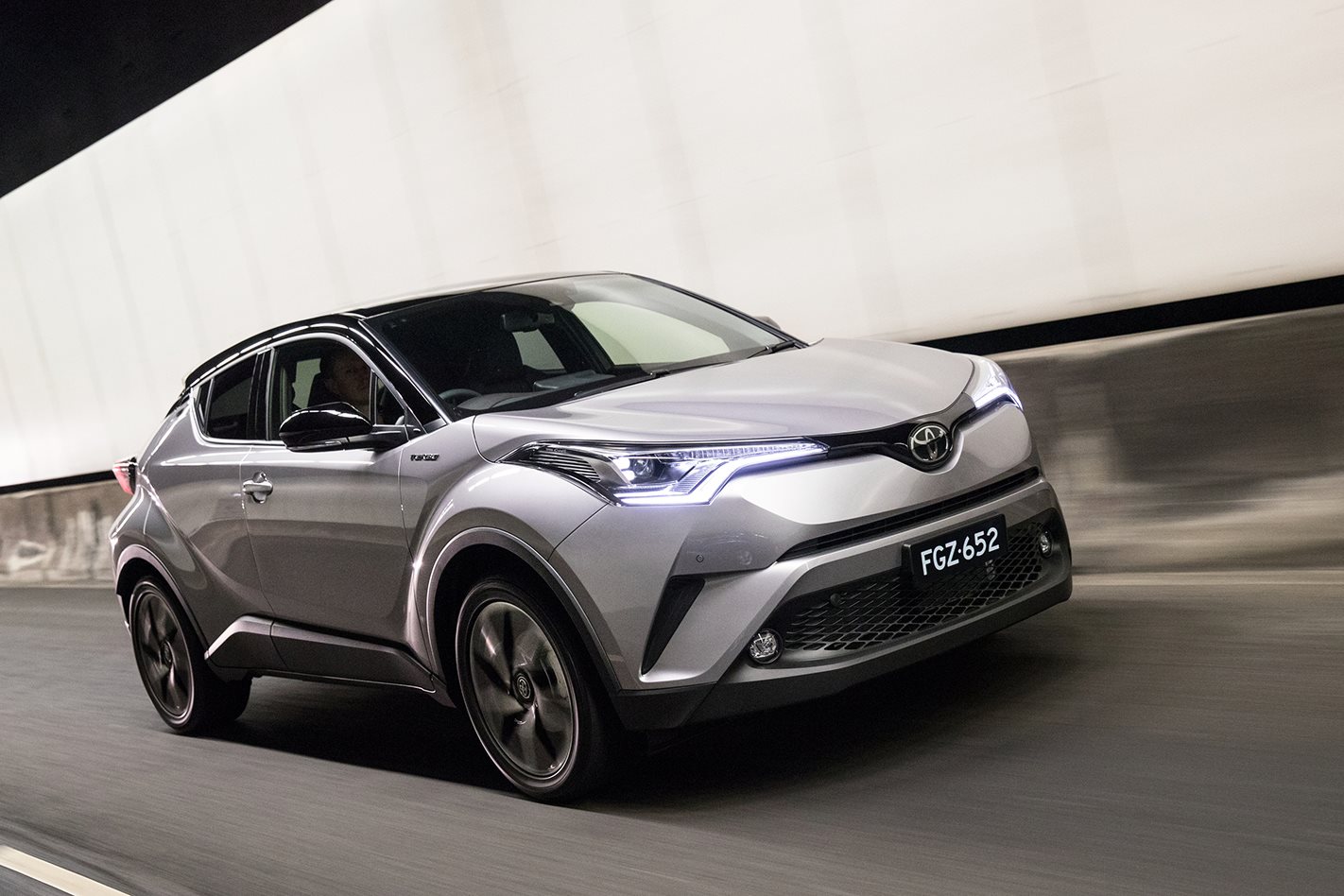WHAT IS IT The C-HR is an all-new small SUV, and the first sign that Toyota is on the verge of a product-led renaissance. It’s one of the brand’s most concerted efforts to produce a properly polished automobile – rather than just phoning it in.
WHY WE’RE TESTING IT Compact crossovers and SUVs are on a trajectory to overtake sales of conventional small cars, and the C-HR is Toyota’s contender for a significant slice of that swelling sales pie. It’s only the second model to be built on Toyota’s box-fresh TNGA platform, and one that we’re keen to experience on Australia’s more challenging roads.
MAIN RIVALS The Mazda2-based CX-3 is the C-HR’s most prominent rival, with other competitors including the Honda HR-V, Nissan Qashqai, Mitsubishi ASX, Holden Trax, Ford EcoSport and Nissan Juke.
THE WHEELS VERDICT If Toyota’s seemingly endless stream of dull automobiles has been making you go a bit green around the gills, then Toyota’s C-HR is the perfect antidote. It’s not just an attempt to snatch some cash in the increasingly-lucrative small SUV segment, but it’s a genuinely impressive car in more ways than one. Well done Toyota.
PLUS: At last, a Toyota that’s cool to look at; capable chassis; healthy standard equipment MINUS: You may need to join a queue for this one; engine could use more pep; pricey for top-spec C-HR Koba.
THE WHEELS REVIEW The C-HR is a most un-Toyota-like thing. It boldly goes against the grain, and when parked next to the largely soulless and conservative metal that presently decorates Toyota showrooms across the country it appears foreign. Actually scratch that: it’s thoroughly alien.
Just look at it. There are curves and creases everywhere, and say whatever disparaging things you want about soft-roaders, but there’s not really a bad angle to the C-HR. It’s an eye-catching – and eye-pleasing – design, and it’s been quite a while since we’ve been able to say that about a Toyota.
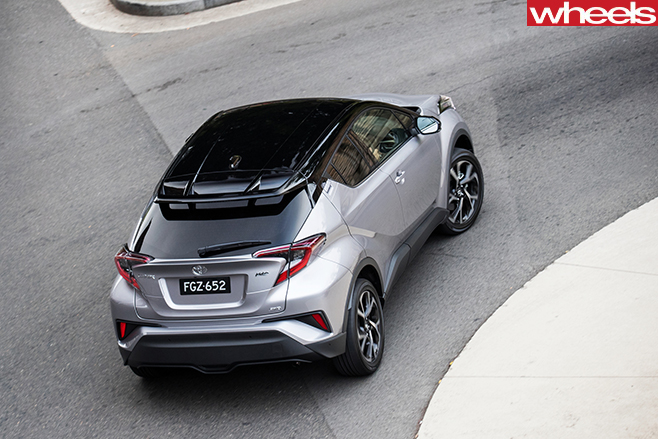
Then there’s the engine – a downsized and turbocharged 1.2 litre that makes 85kW and 185Nm. Low outputs, sure, but Toyota hasn’t thrown turbo tech like this into a mainstream crossover before. There’s also a double-wishbone rear end and a fairly clever all-paw drivetrain option. This car is such an abrupt change of direction and flavour for Toyota, and a refreshing one at that.
Were it not for Toyota Australia’s 6000-car first-year allocation of C-HRs, Mazda and its popular CX-3 should be quaking in their boots right now. Even the more conventional Nissan Qashqai should feel challenged, for the C-HR has the right balance of space, design and driving chops to command this segment… if only Toyota Oz can get enough cars to cater for demand.
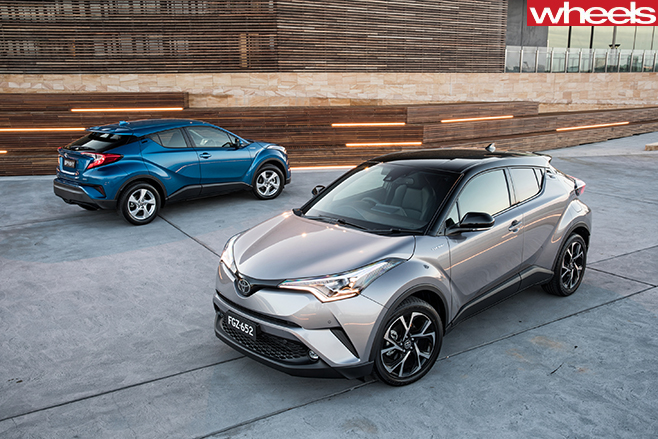
The starting price is admittedly steep at $26,990 for the base C-HR (add $2000 for the CVT automatic), but Toyota counters that by packing in a hefty amount of features as standard. Not only that, but Toyota reckons most people shopping for a mini-SUV don’t go for stripped-out models anyway, and most have around $30k to play with.
The design and materials also impart an air of upmarket sophistication to the C-HR’s cockpit, something that’s a rarity at this end of the SUV spectrum. While the Suzuki Vitara and Nissan Juke make do with cheap, rock-hard plastics, the C-HR takes things to the next level with plenty of soft surfacing and cool textures – though the sparkly gloss black trims are fingerprint magnets.
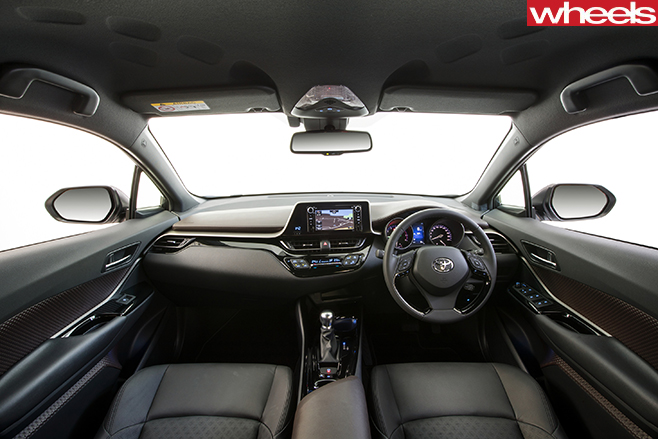
Wider, longer and with 40mm more distance between the front and rear axles compared to the Corolla, the C-HR is also more accommodating on the inside than Toyota’s evergreen hatchback.
There are weird facets to this cabin though. The front cupholders are separated by the gear selector, the glovebox handle is well hidden by the overhanging dashboard and the tiny rear windows and rising shoulder line mean kids will see jack-all from the back seats. Style before function? Yep.
However the real highlight is the C-HR’s all-new TNGA-platformed underpinnings. With Mac struts up front and double wishbones at the rear the hardware story is already impressive enough, but adept tuning endows the C-HR with a well-balanced undercarriage that boasts segment-leading comfort as well as excellent body control.
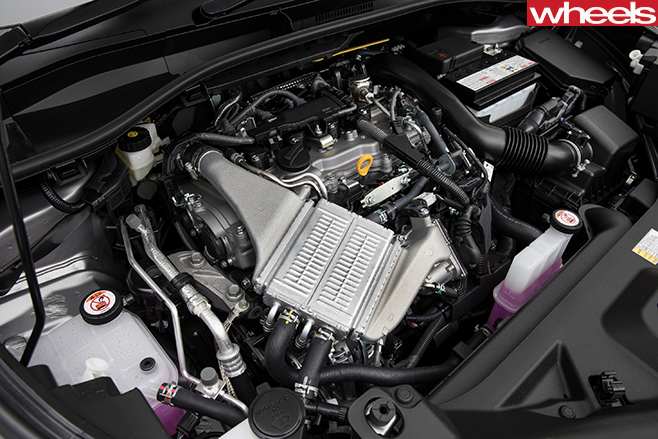
Handling favours understeer, but tip it in with a subtle lift of the throttle and the C-HR’s neat rear end comes into play, rotating with ease. It’s especially enjoyable on dirt. Were we expecting that? After our first experience of it at its European launch, not really, but after driving it on local roads it’s clear that this car can handle bucketloads more grunt – and might make a respectable base for a high-riding hot hatch too.
It’s also clear that Toyota has finally shrugged off whatever malaise was preventing it from building genuinely appealing cars. The 86 was a Subaru-sourced outlier, but the C-HR is the first true signal that Toyota is once again interested in making cars that people would proudly put in their driveway.
Vote for the Toyota C-HR to win the 2018 Wheels Car of the Year Readers’ Choice competition
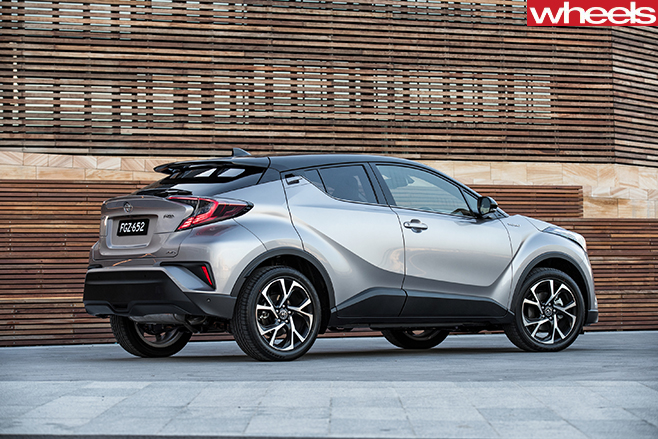
Model: Toyota C-HR automatic Engine: 1197cc 4cyl, dohc, 16v, turbo petrol Max power: 85kW @ 5200-5600rpm Max torque: 185Nm @ 1500-4000rpm Transmission: continuously variable automatic Weight: 1375kg (FWD manual), 1460kg (AWD auto) Economy: 6.4L/100km Price: $28,990 On sale: Now

